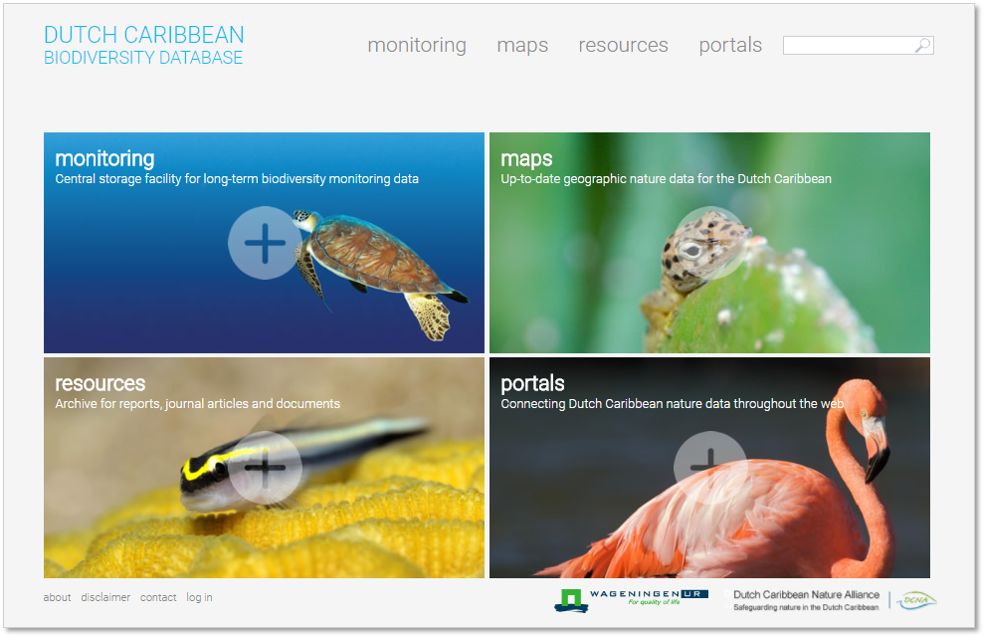The Dutch Caribbean islands experienced a strong growth in tourism and population over the last couple of decades. How can this growth take place without damaging the ecosystems on which the communities depend for their living? Answering this question requires data and information which is scattered among organisations and individuals.
The Dutch Caribbean Biodiversity Database (www.dcbd.nl) supplies a central repository for all biodiversity related research, monitoring data and information from the Dutch Caribbean. The DCBD guarantees long-term data access and availability. In close cooperation with local nature management, governments, local businesses and universities, monitoring data is being processed into graphical indicators, showing status and trends of nature and its pressures.
Today, the Dutch Caribbean Biodiversity Database is an active platform that brings together many stakeholders. These include local and national governments, nature organisations, local businesses, the statistical bureaus (Bonaire and The Hague) and researchers from across the world. The DCBD facilitates the Dutch national government in the fulfilment of reporting obligations, such as the Convention on Biological Diversity. Local authorities and management bodies use the DCBD in their responsibility for spatial planning and interventions with consequences for nature and our environment. For example, the DCBD provides evidence in the form of data and knowledge that helps to grant or deny permits. Businesses such as dive schools use the graphs for outreach and marketing material to attract tourists.
